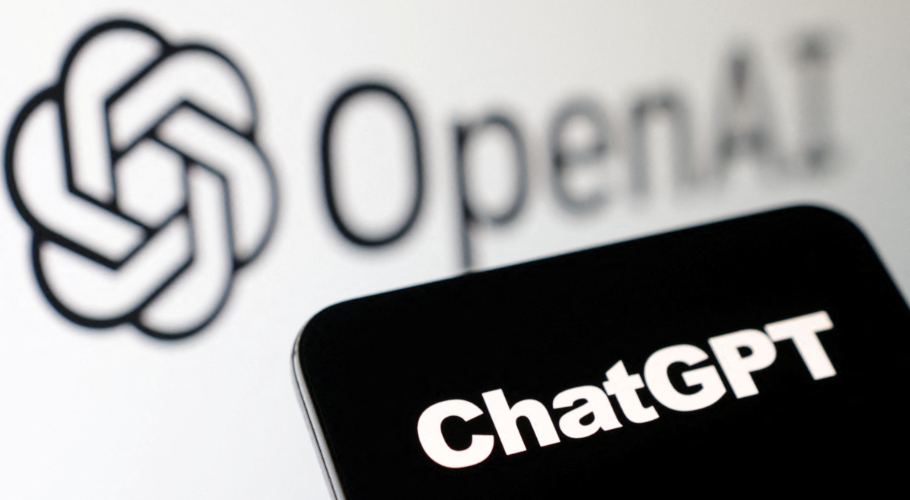
- ChatGPT’s global user traffic declined for three consecutive months but rose among U.S. users, potentially tied to academic cycles
- In August, the combined traffic from desktop and mobile sites to ChatGPT’s services decreased by 3.2%, reaching 1.43 billion visitors worldwide
- Student use during the school year may explain ChatGPT’s fluctuations, with a summer decline and fall rebound
- The data highlights AI chatbots’ role in education and the evolving regulations around AI in schools
ChatGPT, a popular Artificial Intelligence (AI) chatbot developed by OpenAI, has recently experienced a decline in global user traffic for the third consecutive month, as indicated by data from the analytics company Similarweb. In August, the combined traffic from desktop and mobile sites to ChatGPT’s services decreased by 3.2%, reaching 1.43 billion visitors worldwide. This decline follows a notable 10% drop in traffic observed just two months prior. Furthermore, the average time spent on the site per visit also decreased, albeit slightly, from 8.7 minutes to 7 minutes during the month of August.
However, there is an intriguing trend within this data. While global usage is on the decline, the number of visits originating from users based in the United States started to show signs of recovery in August, with a 0.4% increase. Additionally, the number of unique visitors to the site, which had been on a decline in June and July, experienced a 3% increase in the United States and a 0.3% increase worldwide in August.
This fluctuation in user traffic prompts us to explore potential factors contributing to these trends, such as seasonality and user demographics. Moreover, it raises interesting questions about the role of AI chatbots like ChatGPT in educational settings and the evolving regulatory landscape surrounding AI usage in education.
Seasonal Patterns and User Demographics
David F. Carr, the Senior Insights Manager at Similarweb, is a seasoned observer of AI chatbots and has authored the report analyzing ChatGPT’s user trends. He suggests that the fluctuation in users might be attributed to students using the chatbot taking summer breaks and subsequently resuming classes. Carr postulates, “Students seeking homework help appears to be part of the story: the percentage of younger users of the website dropped over the summer and is now starting to bounce back.”
This hypothesis seems plausible, especially when we examine the data in the context of user demographics. The decline in user traffic during the summer months aligns with the period when students typically enjoy their summer vacations. The data also reveals a significant drop in traffic from users aged 18–24 in the United States during this time frame. For instance, traffic in this age bracket decreased by 10% in May, which is around the time when U.S. universities usually conclude their semesters.
READ: The role played by Artificial Intelligence tools in cryptocurrency trading
This decline persisted with a 15% drop in June and an additional 4% decrease in July. Interestingly, in April, users aged 18–24 represented a substantial 30% of the total audience share in the United States.
A separate survey conducted in May 2023 by Intelligent.com provides further evidence of the connection between ChatGPT and student usage. The survey involved 1,223 undergraduate and graduate students in the United States, and a significant 30% of them reported using ChatGPT for schoolwork during the academic year. Among these users, 46% stated that they “frequently” relied on the AI chatbot for homework assistance, and an impressive 1 in 8 claimed to have observed an improvement in their Grade Point Average (GPA), which they attributed to their usage of the AI chatbot.
These findings underscore the importance of considering user demographics and academic calendars when analyzing the usage patterns of AI chatbots like ChatGPT. It is evident that the academic calendar significantly influences the demand for such tools, with students turning to AI chatbots for homework and academic support during the school year.
Implications for AI Usage in Education
While the data indicates that ChatGPT’s user traffic has seen fluctuations in recent months, it also highlights the critical role AI chatbots can play in educational settings. As students increasingly turn to AI-powered tools for academic assistance, there is a growing need to understand and regulate the usage of AI in education.
In the United States, there are currently no overarching rules governing the use of AI tools like ChatGPT in universities and schools. This lack of comprehensive regulations allows students to leverage AI chatbots for various educational purposes, from homework help to improving their GPAs. The data suggests that a significant percentage of students are finding value in these AI-powered tools and, in some cases, attributing their academic success to their usage.
On the other hand, countries like Japan have begun to address the integration of AI tools in education more proactively. The Ministry of Education in Japan has already expressed plans to permit the limited use of generative AI tools in elementary, junior high, and high schools. This proactive approach reflects a growing recognition of the potential benefits of AI in enhancing the educational experience and preparing students for a future driven by technology.
As the usage of AI chatbots and other AI-powered educational tools continues to grow, education policymakers around the world face the challenge of developing appropriate guidelines and regulations to ensure responsible and effective AI usage in educational settings. These regulations should strike a balance between harnessing the benefits of AI in education while addressing potential concerns related to privacy, bias, and overreliance on AI solutions.
Conclusion
The recent fluctuations in user traffic for ChatGPT, characterized by a global decline but a resurgence in usage from U.S.-based users, offer valuable insights into the evolving landscape of AI chatbot usage. Seasonal patterns tied to the academic calendar, particularly among students seeking homework assistance, appear to play a significant role in these trends. Additionally, the data underscores the pivotal role AI chatbots can play in education, as a substantial percentage of students rely on them for academic support and attribute improvements in their academic performance to these AI-powered tools.
The regulatory landscape surrounding AI usage in education is also evolving, with some countries, such as Japan, taking proactive steps to integrate AI tools into schools. As the demand for AI-powered educational tools continues to grow, policymakers face the challenge of establishing guidelines that ensure responsible and effective AI usage while addressing potential concerns.
In summary, the story of ChatGPT’s user traffic fluctuations offers a glimpse into the dynamic relationship between technology, education, and regulation. It emphasizes the significance of considering user demographics and academic calendars when analyzing AI usage trends and highlights the evolving role of AI in shaping the future of education.
- SEO Powered Content & PR Distribution. Get Amplified Today.
- PlatoData.Network Vertical Generative Ai. Empower Yourself. Access Here.
- PlatoAiStream. Web3 Intelligence. Knowledge Amplified. Access Here.
- PlatoESG. Automotive / EVs, Carbon, CleanTech, Energy, Environment, Solar, Waste Management. Access Here.
- PlatoHealth. Biotech and Clinical Trials Intelligence. Access Here.
- ChartPrime. Elevate your Trading Game with ChartPrime. Access Here.
- BlockOffsets. Modernizing Environmental Offset Ownership. Access Here.
- Source: https://web3africa.news/2023/09/12/news/chatgpt-traffic-drops-for-third-month-in-a-row-save-for-academic-research/
- :has
- :is
- 1
- 15%
- 2%
- 2023
- 7
- 8
- a
- About
- academic
- Additional
- Additionally
- address
- addressing
- age
- aged
- AI
- AI chatbot
- AI-powered
- Aligns
- allows
- already
- also
- among
- an
- analytics
- analyzing
- and
- appear
- appears
- approach
- appropriate
- April
- ARE
- around
- artificial
- artificial intelligence
- AS
- Assistance
- At
- audience
- AUGUST
- authored
- average
- back
- Balance
- based
- BE
- been
- begun
- benefits
- between
- bias
- Billion
- Bounce
- breaks
- but
- by
- Calendar
- calendars
- CAN
- cases
- challenge
- characterized
- chatbot
- chatbots
- ChatGPT
- claimed
- classes
- COM
- combined
- company
- comprehensive
- Concerns
- conclude
- conducted
- connection
- consecutive
- considering
- context
- continues
- contributing
- countries
- critical
- cryptocurrency
- Currently
- data
- Decline
- decrease
- decreased
- Demand
- Demographics
- desktop
- developed
- developing
- driven
- Drop
- dropped
- Drops
- during
- dynamic
- Education
- educational
- Effective
- emphasizes
- enhancing
- enjoy
- ensure
- especially
- establishing
- evidence
- evident
- evolving
- examine
- experience
- experienced
- Explain
- explore
- expressed
- Face
- factors
- Fall
- finding
- findings
- fluctuation
- fluctuations
- follows
- For
- FRAME
- from
- further
- Furthermore
- future
- generative
- Generative AI
- Glimpse
- Global
- governing
- GPA
- grade
- graduate
- Grow
- Growing
- guidelines
- had
- hand
- Harnessing
- Have
- he
- help
- High
- high schools
- highlights
- HTTPS
- importance
- impressive
- improvement
- improvements
- improving
- in
- Increase
- increasingly
- indicated
- indicates
- insights
- instance
- integrate
- integration
- Intelligence
- Intelligent
- interesting
- into
- intriguing
- involved
- IT
- Japan
- jpg
- July
- june
- just
- Lack
- landscape
- Leverage
- like
- Limited
- manager
- May..
- might
- ministry
- Minutes
- Mobile
- Month
- months
- more
- Moreover
- Need
- no
- notable
- now
- number
- of
- offer
- Offers
- on
- OpenAI
- originating
- Other
- over
- overarching
- part
- particularly
- patterns
- per
- percentage
- performance
- period
- pivotal
- plans
- plato
- Plato Data Intelligence
- PlatoData
- plausible
- Play
- played
- Point
- policymakers
- potential
- potentially
- preparing
- Prior
- privacy
- Proactive
- provides
- purposes
- Questions
- raises
- reaching
- recent
- recently
- recognition
- recovery
- reflects
- Regulate
- Regulation
- regulations
- regulatory
- regulatory landscape
- related
- relationship
- rely
- report
- Reported
- represented
- responsible
- resuming
- Reveals
- Role
- ROSE
- ROW
- rules
- s
- School
- Schools
- seasonal
- seasoned
- seeking
- seems
- seen
- senior
- separate
- Services
- settings
- shaping
- Share
- should
- show
- significance
- significant
- significantly
- Signs
- Similarweb
- site
- Sites
- Solutions
- some
- spent
- started
- Starting
- stated
- States
- Steps
- Story
- strike
- Student
- Students
- Subsequently
- substantial
- success
- such
- Suggests
- SUMMARY
- summer
- support
- Surrounding
- Survey
- taking
- Technology
- that
- The
- The Future
- the world
- their
- Them
- There.
- These
- they
- Third
- this
- three
- Tied
- time
- to
- tools
- Total
- traffic
- Trend
- Trends
- TURN
- Turning
- two
- typically
- u.s.
- underscores
- understand
- unique
- United
- United States
- Universities
- us
- Usage
- use
- User
- users
- using
- usually
- Valuable
- value
- various
- Visit
- visitors
- Visits
- we
- Website
- when
- which
- while
- with
- within
- world
- worldwide
- year
- Younger
- zephyrnet













